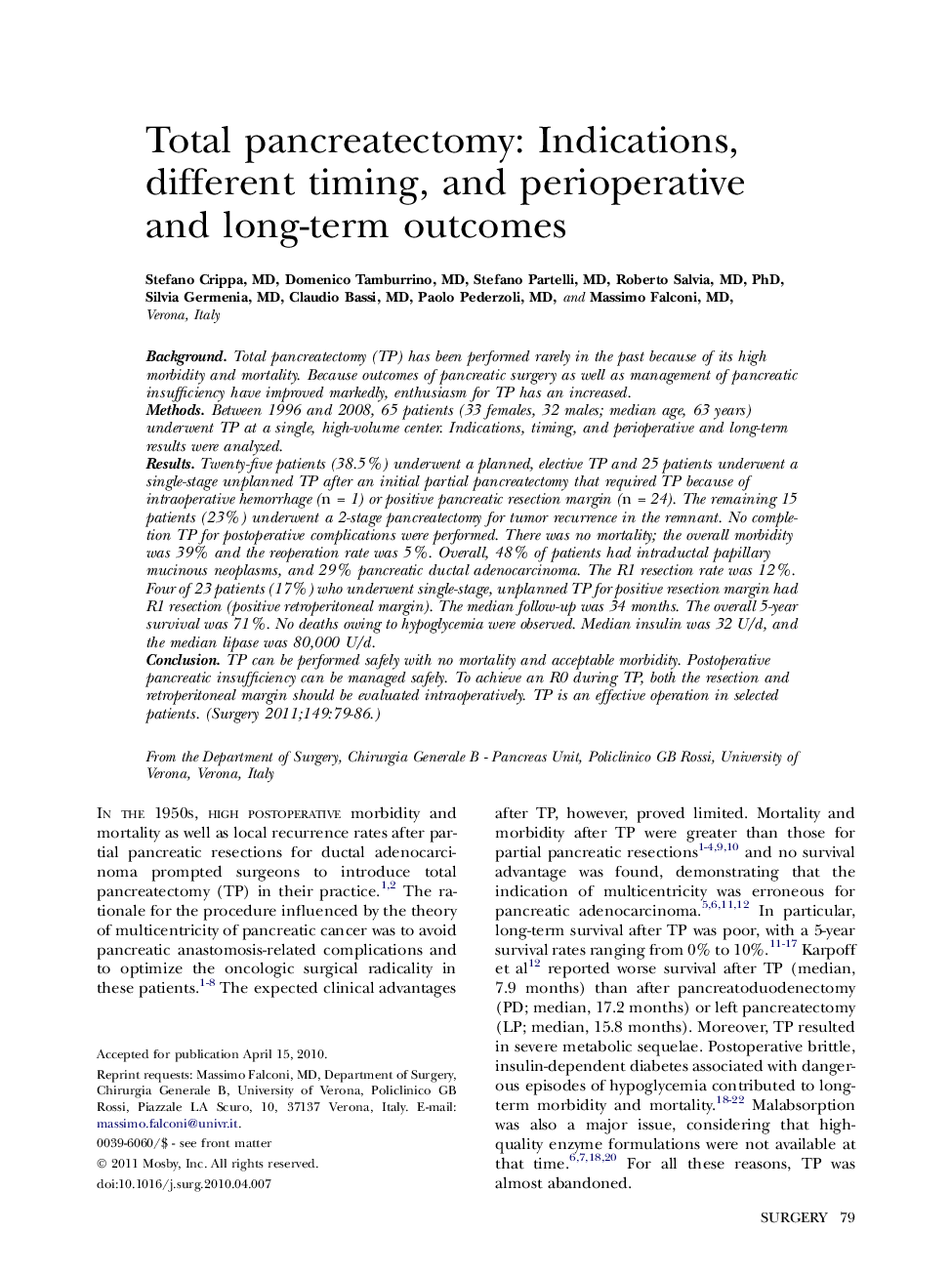| Article ID | Journal | Published Year | Pages | File Type |
|---|---|---|---|---|
| 4309012 | Surgery | 2011 | 8 Pages |
BackgroundTotal pancreatectomy (TP) has been performed rarely in the past because of its high morbidity and mortality. Because outcomes of pancreatic surgery as well as management of pancreatic insufficiency have improved markedly, enthusiasm for TP has an increased.MethodsBetween 1996 and 2008, 65 patients (33 females, 32 males; median age, 63 years) underwent TP at a single, high-volume center. Indications, timing, and perioperative and long-term results were analyzed.ResultsTwenty-five patients (38.5%) underwent a planned, elective TP and 25 patients underwent a single-stage unplanned TP after an initial partial pancreatectomy that required TP because of intraoperative hemorrhage (n = 1) or positive pancreatic resection margin (n = 24). The remaining 15 patients (23%) underwent a 2-stage pancreatectomy for tumor recurrence in the remnant. No completion TP for postoperative complications were performed. There was no mortality; the overall morbidity was 39% and the reoperation rate was 5%. Overall, 48% of patients had intraductal papillary mucinous neoplasms, and 29% pancreatic ductal adenocarcinoma. The R1 resection rate was 12%. Four of 23 patients (17%) who underwent single-stage, unplanned TP for positive resection margin had R1 resection (positive retroperitoneal margin). The median follow-up was 34 months. The overall 5-year survival was 71%. No deaths owing to hypoglycemia were observed. Median insulin was 32 U/d, and the median lipase was 80,000 U/d.ConclusionTP can be performed safely with no mortality and acceptable morbidity. Postoperative pancreatic insufficiency can be managed safely. To achieve an R0 during TP, both the resection and retroperitoneal margin should be evaluated intraoperatively. TP is an effective operation in selected patients.
